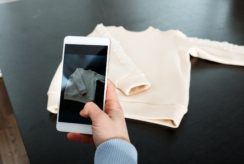Thanks to their study about european market, Tripartie and Wavestone provide managers with the keys to sustainable success in the fast-growing second-hand market.
In a context of growing ecological awareness and changing consumption patterns, the global second-hand market is growing by 22%[1] (a market size of 105 billion euros) compared to 2020. This is what the recent study carried out by Tripartie in partnership with Wavestone reveals. How do you explain the dynamism of this market? What are its pain points? What are consumers’ expectations and what tools prevail to control risks and optimize transactions? These are just some of the questions that the publication sheds light on.
The second hand: how to explain the exponential growth of this market?
The demand for second-hand products is clearly on the rise, according to a survey, almost half of French people (46%) have bought at least one second-hand product in the last 12 months[2].This trend can be explained on the one hand by the increasing number of gift mistakes and online purchases, but above all by the current economic and ecological context:
- The low prices offered improve purchasing power
- The health context has favored distance selling
- Ecological awareness
Julien Miniconi
Partner
Wavestone
Today, the second-hand market represents a real development opportunity for the retail sector. However, it still needs to find its economic AND ecological model, particularly with the impact of the increase in the number of parcels and deliveries.
The sale and purchase of second-hand clothing has become a global phenomenon, with the market estimated to grow by 24%[3] between 2020 and 2021. In this context, the competition between second-hand pure players and traditional retailers is increasingly intense now that most retailers are present on the second-hand market. For the latter, the sale of second-hand products represents a real opportunity and makes it possible to “wake up” a part of the clientele that no longer comes to the shop or to the brand’s e-commerce site.
Today, most retailers already have marketplaces and have most of the tools to enter the second-hand market quickly and successfully. Retailers have many assets to succeed on this market: a strong brand image, physical shops and responsive customer service.
A profitable market?
Although it has become a part of everyday life in France, second-hand sales must find a way to achieve profitability in order to maintain its place in the market. To do this, there are many sources of additional income:
- The implementation of commissions on the volume of sales: a percentage of the sale price is collected by the platform in return for the services and protection provided to the user;
- The sale of subscription packages to the platform: users can have access to additional features;
- The sale of advertisements on the platform;
- Increasing BtoC traffic: C2C can attract new customers to the brand’s physical shops

Victorien De Docker
CEO
Tripartie
The development of purchases between private individuals is hindered by the risks involved and the lack of trust between users. Our ambition is to share our knowledge of this market to enable all brands to integrate second-hand and private transactions into the heart of their business, with complete peace of mind. We want every business to be able to grow while changing our consumption habits.

This publication was produced by Tripartie in partnership with Wavestone



